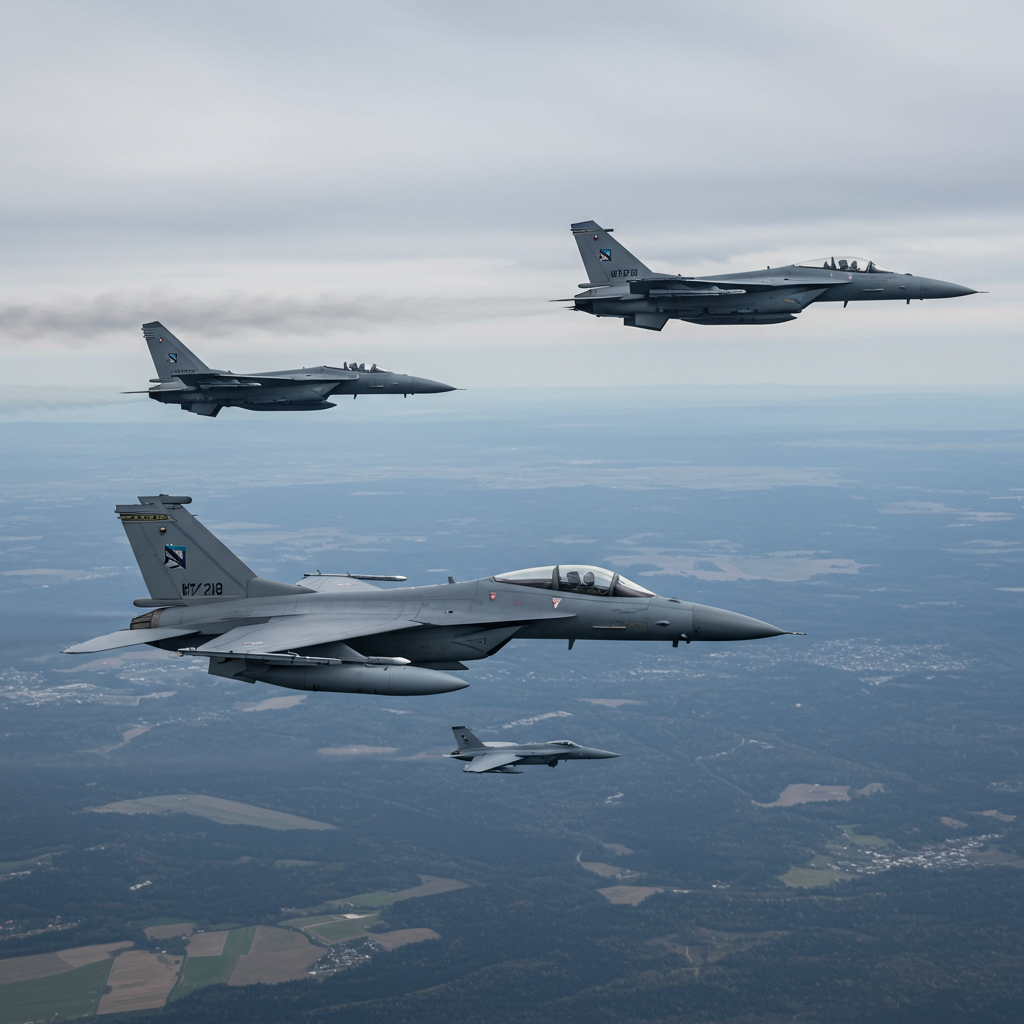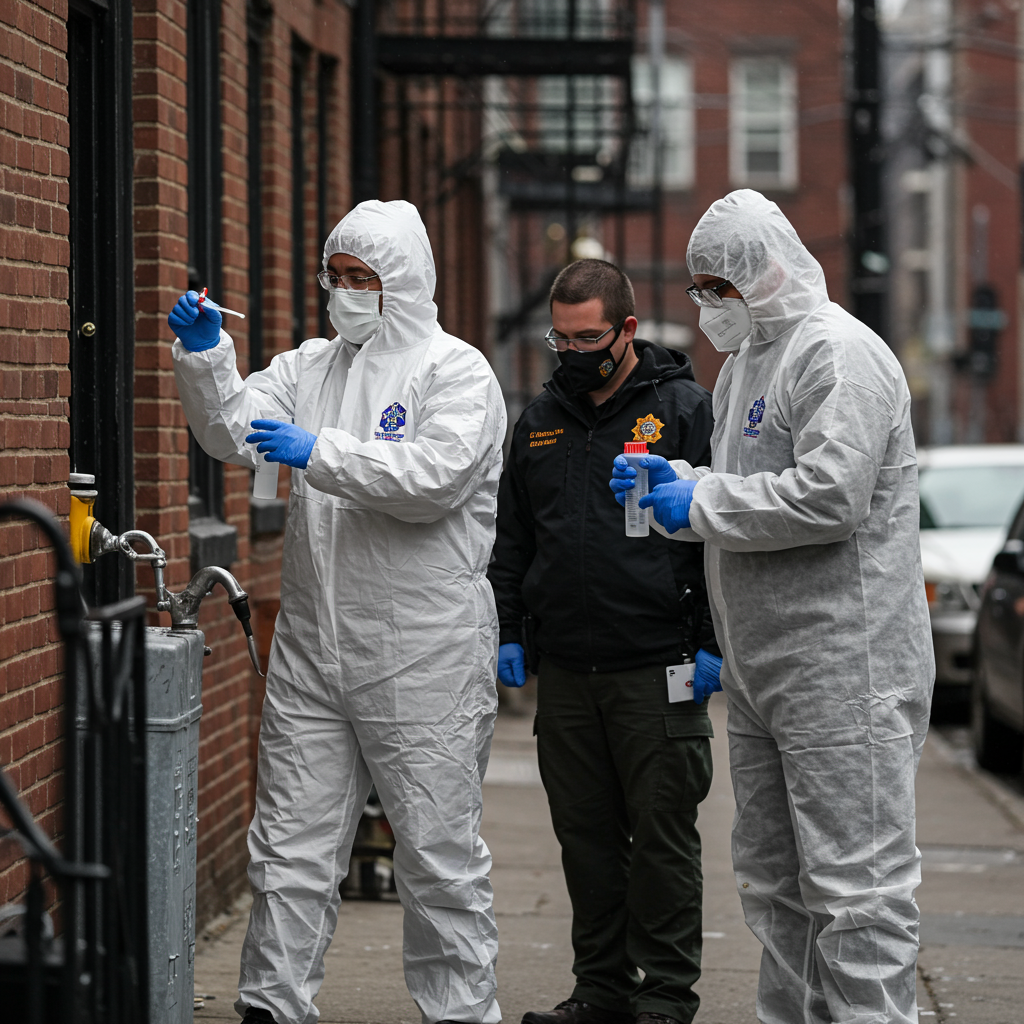In a significant show of vigilance following an unprecedented barrage of russian airstrikes against ukraine, NATO member Poland scrambled fighter jets and raised its air defense systems to the highest state of readiness. This swift response unfolded overnight as Russia launched what Ukrainian officials described as the largest aerial assault since the full-scale invasion began, targeting cities across Ukraine, including those dangerously close to NATO’s eastern flank. The measures were taken to safeguard national airspace and closely monitor the escalating situation unfolding just across the border.
Poland’s Operational Command confirmed the activation of Quick Reaction Alert (QRA) fighters and the heightened alert status for ground-based air defenses and radar systems. Both Polish and allied aircraft participated in this coordinated air response. Authorities emphasized that these actions were purely precautionary, designed to maintain comprehensive situational awareness and secure Polish territory against potential spillover from the intense fighting nearby. While the air patrols lasted for about two hours, Polish officials reported that no violations of Poland’s airspace were detected during this specific event.
Unprecedented Russian Air Assault Triggers Alarm
The immediate trigger for NATO’s heightened posture was the sheer scale and intensity of the Russian attack. Ukraine’s air force reported a staggering number of aerial targets launched overnight: 728 drones, six Kinzhal hypersonic ballistic missiles, and seven cruise missiles. This volume was characterized by Ukrainian President Volodymyr Zelensky as the “highest number of aerial targets in a single day.” Specifically, Ukrainian spokespersons noted that over 300 of the inbound drones were Iranian-designed Shaheds.
These massive waves of strikes inflicted widespread damage across multiple regions. While Moscow reportedly focused heavily on infrastructure and military facilities in the western cities of Lutsk and Khmelnytskyi, both located near the Polish border, strikes also hit major population centers like Kyiv, Dnipro, Kharkiv, and Mykolaiv, as well as other areas in northeastern, central, and southern Ukraine. Reports emerged of significant casualties, including fatalities and numerous injuries in Kyiv, and damage to residential buildings and civilian infrastructure, highlighting the devastating human cost of these attacks.
Ukrainian defense forces mounted a vigorous response. They reported shooting down just under 300 drones and successfully intercepting all seven cruise missiles. However, the advanced Kinzhal hypersonic missiles proved challenging, with no interceptions reported for this specific weapon type. Ukrainian officials also stated that over 400 drones reportedly strayed or failed to reach their intended targets.
Why Attacks Near NATO Borders Demand Vigilance
The proximity of Russia’s intensified airstrikes to the borders of NATO member states like Poland and Romania continuously heightens tensions and necessitates a proactive defensive stance. NATO’s eastern flank has been significantly reinforced since the 2022 invasion, with increased air policing and deterrence efforts. Scrambling fighter jets in response to activity near alliance territory is a direct consequence of this reinforced posture.
While NATO members are collectively obliged to respond to an attack on any single member nation under Article 5 of the alliance’s founding treaty, stray drones or missiles near or even briefly entering NATO airspace have not, so far, been formally treated as triggering Article 5. Such incidents have typically been classified as accidents or indirect threats. However, the recurring nature and intensity of these attacks, particularly those hitting western Ukraine, increase the risk of miscalculation or unintended incidents.
Past events underscore these persistent security challenges. In late 2022, a missile struck a village in Przewodów, Poland, tragically killing two people. While investigations later determined it was likely a Ukrainian air defense interceptor responding to Russian attacks, the incident highlighted the volatile environment and the potential for the conflict to spill over. Similarly, wreckage from a Russian Kh-55 cruise missile was discovered in Poland in April 2023, believed to have landed months earlier. These incidents necessitate constant vigilance and proactive measures by NATO’s frontline states to monitor and protect their airspace.
US Policy Shifts and the Critical Need for Air Defense
The intensified Russian attacks also intersect with the evolving political landscape in the United States, particularly concerning continued aid to Ukraine. President Donald Trump, who has previously voiced frustration with Russia’s unwillingness to agree to a U.S.-brokered ceasefire, has reportedly become more openly critical of Russian President Vladimir Putin following Ukraine’s signing of a ceasefire agreement that Moscow did not join.
In recent statements, Trump has expressed disappointment after calls with Putin and used strong language to describe the challenges in dealing with the Russian leader. Following a period where some U.S. military aid to Ukraine was paused, Trump has now signaled a renewed commitment to sending more weapons to Kyiv.
A primary concern for Ukraine’s defense officials has been the supply of interceptor missiles for the US-made Patriot air defense system. The Patriot system is considered Ukraine’s most effective tool for countering ballistic missiles, including potentially the Kinzhals that Ukrainian forces have struggled to intercept. Reports indicate that President Trump has privately promised Ukrainian President Zelensky a rapid delivery of a specific number of Patriot interceptors and is exploring further avenues for providing these crucial missiles, including potentially sending an additional full Patriot system. This focus on advanced air defense underscores the critical need for Ukraine to protect its cities and infrastructure from Russia’s diverse and increasingly numerous missile and drone strikes.
Frequently Asked Questions
How large was the Russian missile and drone attack that prompted NATO’s response?
Ukrainian officials described the attack as the largest aerial assault since the war began, involving the “highest number of aerial targets in a single day.” They reported a total of 728 drones (including over 300 Shaheds), six Kinzhal hypersonic missiles, and seven cruise missiles launched across Ukraine. This unprecedented scale near NATO borders triggered heightened alert levels.
Why did NATO member Poland scramble fighter jets if its airspace wasn’t violated?
Poland, a NATO member bordering Ukraine, scrambled jets as a precautionary measure due to the intense Russian airstrikes occurring close to its border. While Polish airspace was not reportedly violated during this specific event, the sheer volume and proximity of the Russian attacks, coupled with past incidents where munitions have landed in Poland, necessitate immediate monitoring and readiness to ensure national airspace security and maintain situational awareness along NATO’s eastern flank.
Why are Patriot missiles crucial for Ukraine’s defense against Russian attacks?
Patriot missile systems are vital for Ukraine because they are considered the most capable defense against Russia’s advanced ballistic missiles, such as the Kinzhal. These weapons are difficult for other air defense systems to intercept. Securing a consistent supply of Patriot interceptors is critical for Ukraine to protect its major cities and strategic infrastructure from these highly destructive attacks, helping to mitigate casualties and damage.
Conclusion
The recent, record-breaking Russian aerial assault on Ukraine and the immediate defensive actions taken by NATO members like Poland highlight the persistent and escalating tensions on Europe’s eastern edge. While NATO maintains a vigilant posture along its borders, the conflict’s potential for spillover remains a significant concern, underscored by past incidents. The scale of the Russian attack also emphasizes the urgent need for enhanced air defense capabilities in Ukraine, particularly systems capable of intercepting advanced ballistic threats. As leaders continue to navigate this complex geopolitical landscape, the focus remains on preventing escalation while supporting Ukraine’s ability to defend itself against relentless and increasingly massive aerial bombardments.
Word Count Check: 1055




